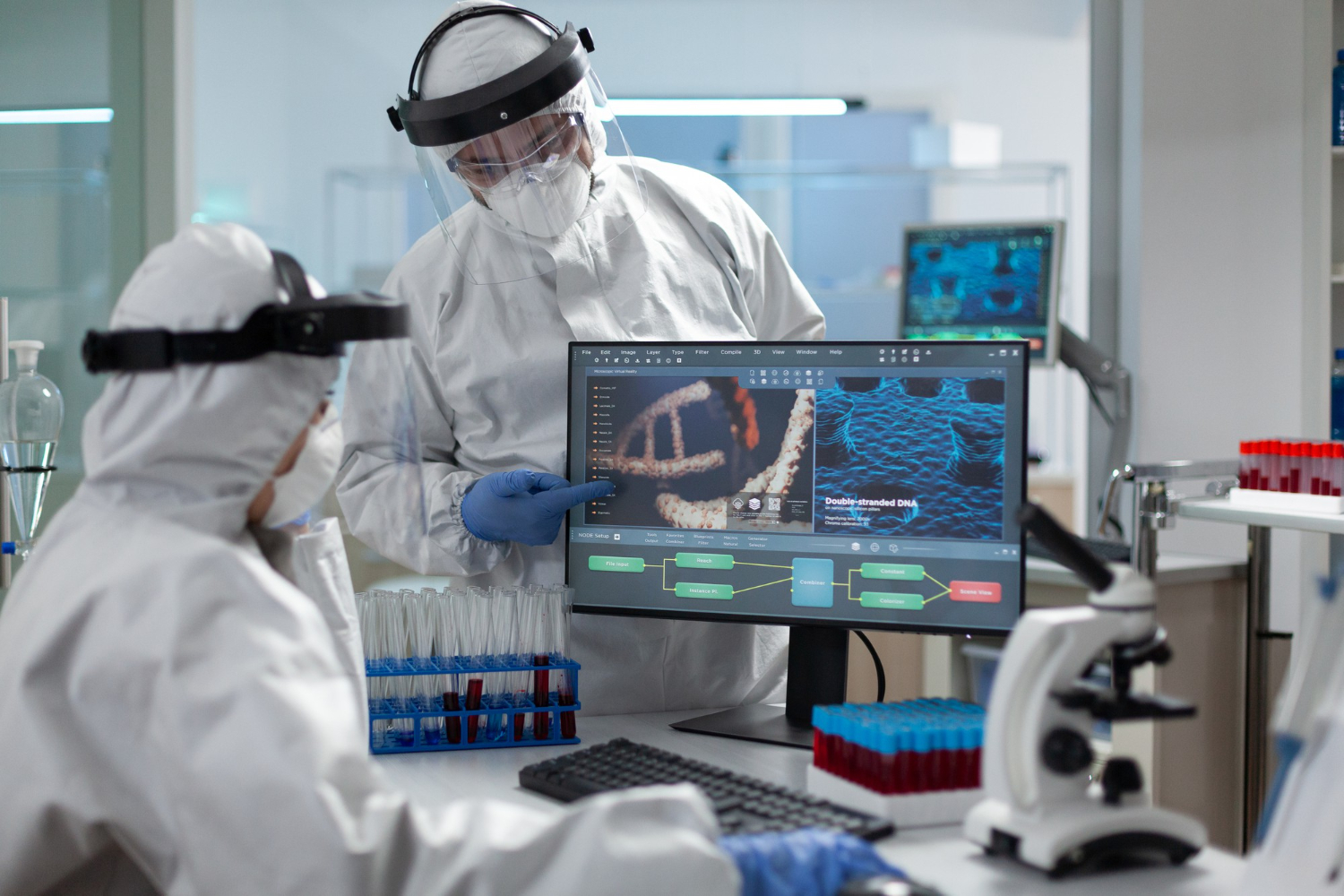Introduction: Why Vision Matters in Healthcare
Modern medicine runs on images. Every day, hospitals produce millions of digital images—CT scans, MRIs, chest X-rays, and pathology slides. These pictures hold critical clues about disease, recovery, and risk.
Yet the sheer volume overwhelms even the most skilled healthcare professionals. Large datasets grow faster than human capacity to interpret them. Delays creep in. Errors occur.
Computer vision systems now stand as a practical answer. They apply artificial intelligence (AI) and machine learning to medical imaging tasks, from image classification to cancer detection. They support early detection, monitor patients in intensive care units, and streamline medical diagnostics. This article examines the impact of computer vision on the medical field, showing how deep learning models and computer vision techniques reshape patient care.
Read more: Computer Vision in Action: Examples and Applications
The Scale of the Challenge
Hospitals face relentless growth in imaging demand. Chest X-ray studies alone number in the millions each year. Add CT, MRI, and ultrasound, and the load becomes staggering.
Radiology departments store large datasets that require fast, accurate interpretation. Manual review cannot keep pace.
Errors in interpretation carry heavy costs. A missed lesion can delay treatment. A false positive can trigger unnecessary tests. Both outcomes harm patients and strain budgets.
Computer vision systems reduce these risks by automating routine checks and highlighting critical findings for human review.
From Pixels to Insight: The Workflow
Computer vision techniques follow a structured path:
-
Image Processing: Raw digital images often contain noise, poor contrast, or motion blur. Pre-processing corrects these flaws. Algorithms adjust brightness, sharpen edges, and normalise colour. Clean inputs reduce downstream errors.
-
Feature Extraction: Systems identify patterns—edges, textures, and shapes—that matter for diagnosis.
-
Image Classification and Detection: AI models assign labels or mark regions of interest. For example, a chest X-ray may receive a “normal” tag or a bounding box around a suspected lung cancer nodule.
-
Decision Support: Results appear as overlays, confidence scores, and structured reports. Healthcare professionals confirm findings and act.
This pipeline repeats across modalities, from radiology to pathology. Each step adds clarity and speed.
Read more: Mimicking Human Vision: Rethinking Computer Vision Systems
Early Detection: Time as a Clinical Asset
Early detection saves lives. Lung cancer illustrates the point. A small nodule on a chest X-ray may signal early disease. If overlooked, it can progress before treatment begins.
Computer vision systems rank studies by risk and push likely positives to the top of the queue. Radiologists read these first. Patients move to care sooner.
Screening programmes also benefit. AI models compare current and prior scans, spotting subtle growth or density changes. These alerts prompt timely follow-up. Clinicians remain in control, but machines ensure nothing slips through unnoticed.
Cancer Detection Beyond Radiology
Cancer detection spans multiple domains. Pathology labs scan slides at high resolution. Deep learning models analyse these digital images for abnormal cell patterns. They grade tumours, count mitoses, and flag regions for closer review.
Breast screening offers another case. Traditional double reading sets a high standard. AI can act as a second reader or triage tool, removing clear negatives from the review list. This approach preserves accuracy while freeing time for complex cases.
Read more: Visual analytic intelligence of neural networks
Monitoring Patients in Intensive Care Units
Intensive care units demand constant vigilance. Computer vision systems add a layer of safety without adding wires. Cameras track posture, detect line disconnections, and monitor respiratory effort.
AI models analyse these feeds in real time. When risk appears—such as a blocked ventilator tube—the system sends an alert. Nurses respond before harm occurs.
Privacy remains paramount. Hospitals enforce strict consent and encryption protocols. Video complements sensors; it does not replace clinical judgement.
How AI Models Learn to See
Artificial intelligence drives modern computer vision. Deep learning models, especially convolutional neural networks, dominate medical imaging tasks. These architectures learn hierarchical features: edges in early layers, complex shapes in deeper layers.
Training requires large datasets. Models ingest thousands of labelled images—chest X-rays, CT slices, pathology slides—and learn patterns linked to disease. Validation uses separate sets to confirm generalisation. Robust pipelines include bias checks and calibration to maintain fairness and reliability.
Image Classification and Segmentation in Practice
Image classification assigns a global label: normal, pneumonia, fracture. Segmentation goes further, outlining regions such as tumours or organs. Both tasks matter. Classification speeds triage. Segmentation supports planning for surgery or radiotherapy.
Computer vision techniques combine these outputs with structured reports. Clinicians receive clear visuals and concise summaries. They act faster and with greater confidence.
Read more: Visual Computing in Life Sciences: Real-Time Insights
Managing Large Datasets Without Chaos
Medical imaging generates terabytes of data. Hospitals need systems that store, retrieve, and process these files efficiently. Cloud platforms and distributed computing enable parallel analysis of thousands of studies. Compression and caching reduce costs without losing detail.
Governance matters as much as technology. Teams enforce de-identification, access controls, and audit trails. These steps protect privacy and meet regulatory standards.
Building Trust Through Interpretability
Healthcare professionals demand transparency. AI models must explain their reasoning. Systems provide heatmaps, confidence scores, and logs. A chest X-ray flagged for lung cancer shows the region that triggered the alert. A pathology slide marked “high risk” includes visual cues for review.
Interpretability supports compliance. Regulators require documented evidence for automated decisions. Hospitals meet these standards with explainable AI dashboards and clear audit trails.
Read more: High-Throughput Image Analysis in Biotechnology
Applications Across Clinical Domains
-
Radiology: Chest X-rays, CT scans, and MRI benefit from automated triage and detection.
-
Pathology: Digital slides analysed for tumour grading and cell counts.
-
Ophthalmology: Retinal images screened for diabetic changes.
-
Dermatology: Lesion photos classified for urgent referral.
Each domain uses tailored computer vision techniques but shares the same goal: faster, safer patient care.
Challenges That Still Stand
Noise, bias, and drift remain real risks. Models trained on one scanner may falter on another. Rare conditions can escape detection. Hospitals counter these issues with continuous monitoring, retraining, and rigorous validation.
Ethics also demand attention. Teams review fairness across age, sex, and ethnicity. They document fixes and publish metrics. Patients deserve tools that work for everyone.
Making Vision Deliver in Clinics
Hospitals need more than a good demo. Teams need working tools that improve patient care every day. Start with one service line and one metric. Pick a clear goal, such as faster early detection on chest X‑ray triage or fewer missed lines in intensive care units. Define the baseline. Run a short pilot. Measure the change. Share the results with the people who read the images and the people who act on the findings.
Build the workflow around real cases. Capture digital images with stable protocols. Apply image processing that fixes noise and contrast before any model sees a pixel. Keep inputs clean, and the prompts stay clean. Use computer vision techniques that match the task. Run image classification for simple “normal” versus “abnormal” gates. Add targeted detection for nodules, tubes, or bleeds when the task demands location and size.
Treat data flow as part of care, not as an IT side note. Large datasets grow every shift, so you need storage plans that do not slow the list. Cache priors that matter for change checks. Keep logs that explain why the system moved a study up the queue. Healthcare professionals work faster when they trust each step. They also teach the system what to flag next.
Tighten the loop with clear feedback. Radiologists confirm or reject each prompt. Pathologists mark regions that the tool missed. ICU nurses label a false alarm with one tap. You then feed these labels back to AI models and retrain on real drift. Deep learning models improve when the loop stays short. You do not need heroic compute. You need good labels and regular updates.
Avoid silent breaks between teams. Bring clinical leads, informatics, and quality in the same room. Agree on definitions for success in medical diagnostics. For cancer detection, set targets that reflect risk and pathway slots. For lung cancer, track time to the first CT and time to the first MDT slot. For ward safety, track true alerts per bed, not just model AUC. Numbers only matter when the ward feels the lift.
Plan for scale after the first win. Add one adjacent use case at a time. Move from chest X‑ray to CT triage. Move from tube checks to posture and fall risk. Keep the core pipeline and extend heads and rules. You control complexity when you reuse proven parts. You also reduce training time for staff, because the interface stays familiar.
Protect patients while you grow. Keep consent flows clear and simple. Mask faces when you do not need identity. Encrypt streams from cameras that monitor patients and store only frames that trigger an event. Publish audit trails that show who viewed what and when. People accept computer vision systems when they see care and respect in every step.
Budget for uptime. Clinical tools fail if they stall during peak hours. Run active monitoring. Track latency and error spikes. Set safe fallbacks that route images to manual review when a threshold trips. Clinicians need predictable tools, not flashy ones. Reliability beats novelty, especially on busy lists.
Teach the reasoning, not just the buttons. Show heatmaps and confidence bands next to each prompt. Explain why the model pushed a case up the list. Share simple one‑page guides for common misses. When a reader understands why a nodule alert fired, the reader engages. Engagement lifts accuracy far more than slogans about artificial intelligence ai.
Always link value to action. A better score means little if no pathway changes. If the system flags likely pneumonia on a chest X‑ray, the ward should receive a clear, timed task. If a triage tool ranks stroke higher, the scanner should open a slot without a phone chase. Computer vision on the medical field delivers when the prompt moves a patient sooner.
Finally, keep a roadmap that faces the clinic, not the lab. Start with tasks that remove friction. Expand to tasks that unlock capacity. Use AI models to pre‑read, to compare priors, to track change, and to filter noise. Let deep learning models do the heavy lifting on pixels. Let people decide care. This blend scales with less risk and more trust.
Read more: Pattern Recognition and Bioinformatics at Scale
Future Directions in Medical Vision
Research points to multimodal AI—linking images with text and lab data for richer insights. Self-supervised learning reduces reliance on heavy labelling. Edge computing brings inference closer to scanners, cutting latency. Generative models balance datasets for rare diseases under strict governance.
These trends promise smoother workflows and better outcomes. Adoption will depend on safety, clarity, and measurable value.
Optimising Accuracy and Interpretability
Accuracy underpins trust. Hospitals run layered validation: cross-check segmentation against ground truth, calibrate thresholds, and monitor drift. Automated alerts flag anomalies in real time.
Interpretability remains critical. Explainable AI tools show why a model acted. Hybrid systems combine rule-based logic with deep learning for clarity. This balance ensures decisions are fast yet defensible.
TechnoLynx: Practical Vision for Patient Care
TechnoLynx builds computer vision systems that fit clinical reality. We design pipelines for image processing, classification, and segmentation. Our deep learning models handle large datasets and deliver robust performance across devices. We integrate with PACS and EHR without friction.
Our solutions support early detection, cancer detection, and ICU monitoring. We provide dashboards that explain results and logs that satisfy audits. We train models on diverse data and validate them under real conditions.
Let’s collaborate and turn your medical imaging challenges into reliable, patient-centred solutions with TechnoLynx.
Continue reading: Image Analysis in Biotechnology: Uses and Benefits
Image credits: Freepik













